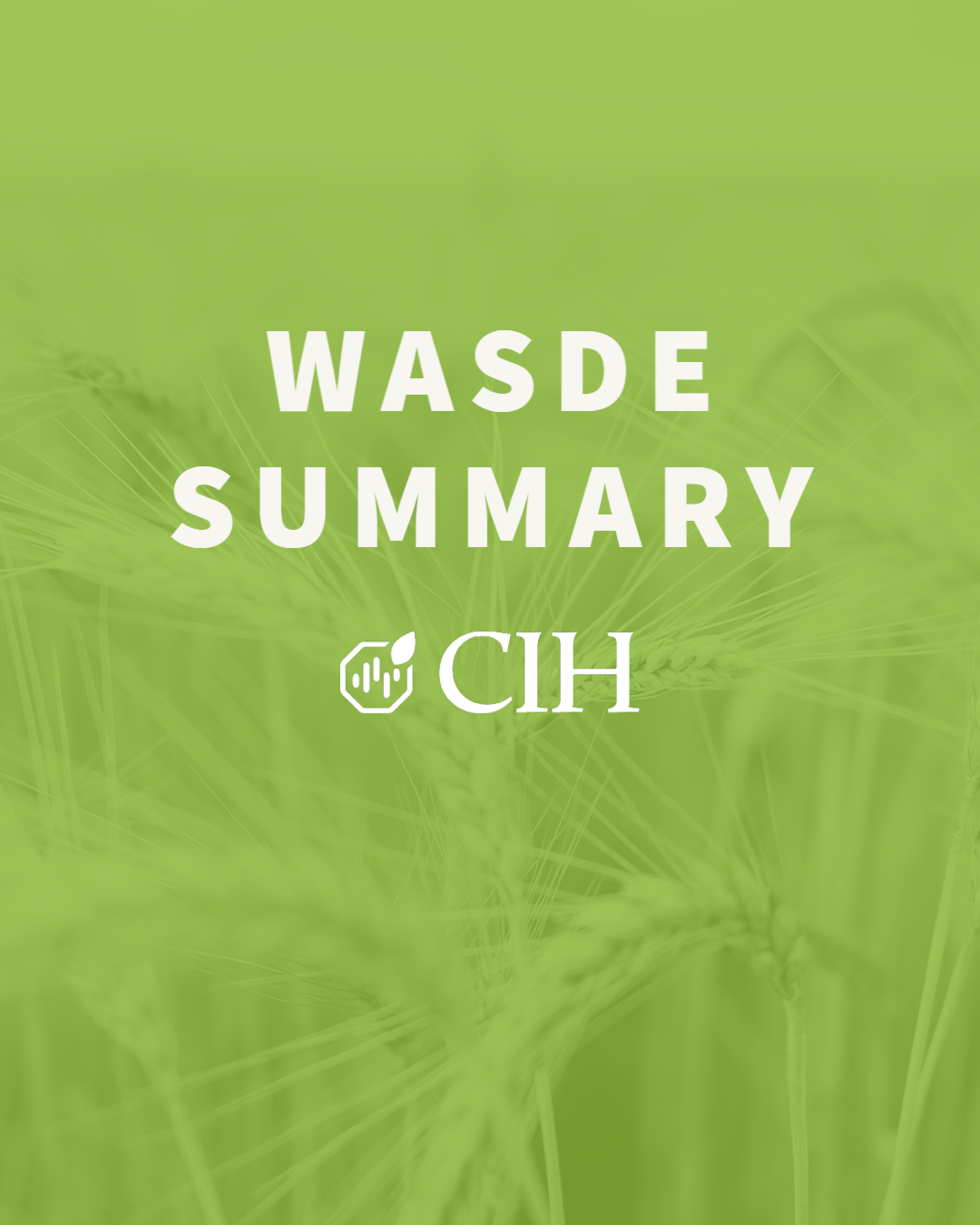
December 08, 2023
DECEMBER 2023 WASDE REPORT SUMMARY & NOTES:
The December WASDE report was largely in line with expectations and relatively neutral for the corn, soybean, and wheat markets. Market attention remains focused on export demand and South American weather’s impact on Brazilian and Argentine crop production potential.
For corn, the domestic 2023/24 outlook called for higher exports and lower ending stocks. Exports were increased by 25 million bushels due to the pace of sales and shipments to date. No other changes were made to the balance sheet, leading to a reduction in ending stocks to 2.131 billion bushels, nearly identical to the average pre-report estimate of 2.157 billion. The season-average corn price received by farmers was unchanged from last month at $4.85 per bushel. The global balance sheet called for an increase in production and a marginal uptick in ending stocks. Production was increased in Russia, Ukraine, and the EU to offset reductions in Mexico and Canada. No changes were made in Brazil or Argentina despite uncooperative weather causing planting delays across the region. Global ending stocks ticked higher to 315.2 million metric tons, slightly higher than the upper end of analysts’ range of pre-report estimates (310 to 315 million metric tons).
Corn exports increased on recent uptick in export demand:

If realized, domestic ending stocks would be largest since 2018/19:

The domestic soybean 2023/24 balance sheet made no changes from last month’s estimates. The season-average soybean price was unchanged from last month at $12.90 per bushel. Ending stocks remained constant from last month at 245 million bushels, nearly identical to the average pre-report estimate of 242 million bushels. The global balance sheet called for lower production due primarily to a 2.0 million metric ton reduction in Brazil. Hot and dry conditions in Mato Grosso delayed planting and have taken a toll on crop condition ratings. Chinese soybean imports were increased by 2.0 million tons. Global ending stocks were reduced marginally to 114.21 million metric tons, slightly larger than the average pre-report estimate of 112.9 million but within the range of estimates.
Chinese soybean imports expected to be record large:

Domestic stocks-to-use ratio remains near lower end of historical range:

The 2023/24 domestic wheat balance sheet called for higher exports and reduced ending stocks. Exports were increased by 25 million bushels on large recent sales to China. Ending stocks were reduced by the same amount to 659 million bushels. This was below the lower end of the range of pre-report estimates but would remain 13 percent higher than a year ago. The season-average farm price was increased by a dime from last month to $7.30 per bushel. The global balance sheet called for higher supplies, larger use, and reduced stocks. Increases in supply in Australia and Canada offset reductions in Brazil. Projected ending stocks were reduced to 258.2 million metric tons, nearly identical to the average pre-report estimate of 258.8 million. If realized, this would represent the lowest global ending stocks of wheat since 2015/16.
Outstanding wheat export sales have ticked higher in recent weeks:

Despite the increase, all wheat exports expected to remain at lowest level in at least 30 years:
